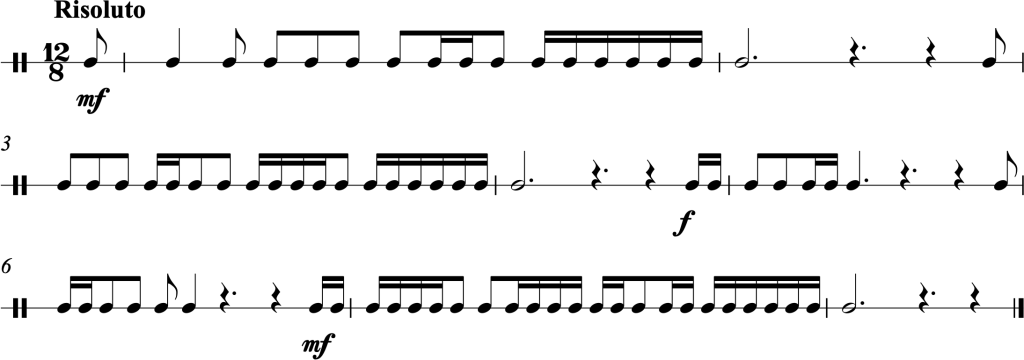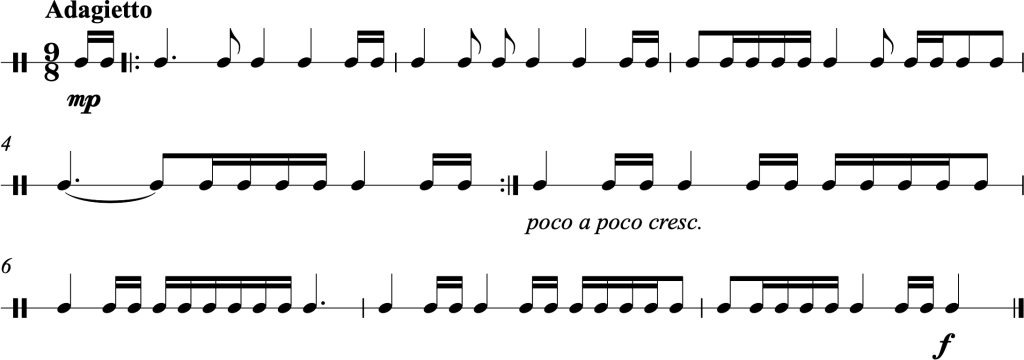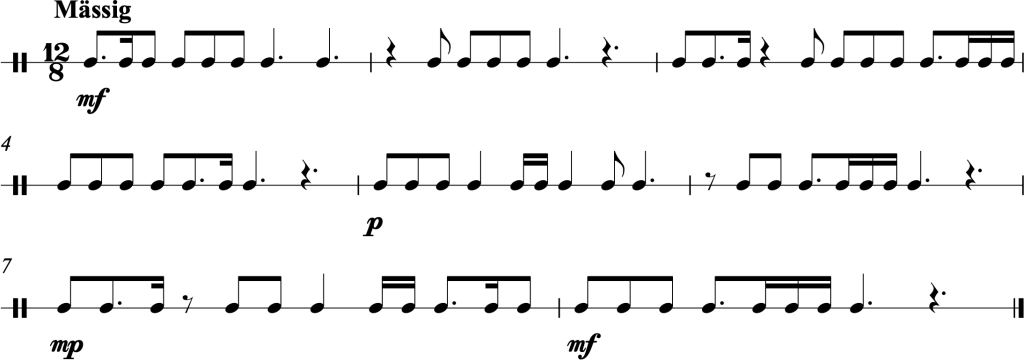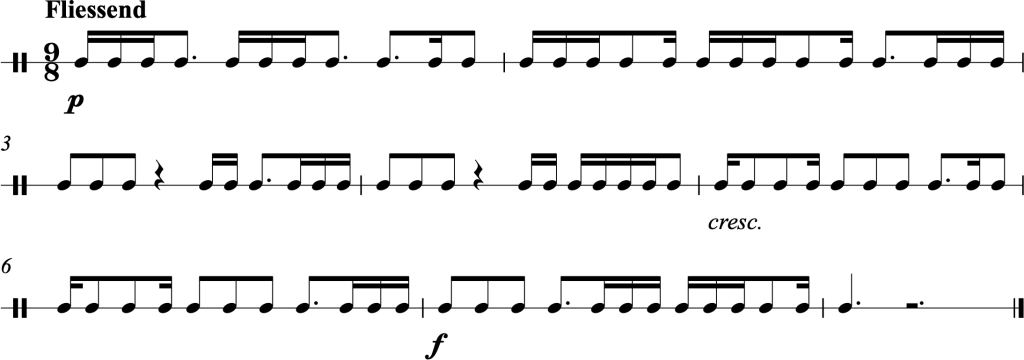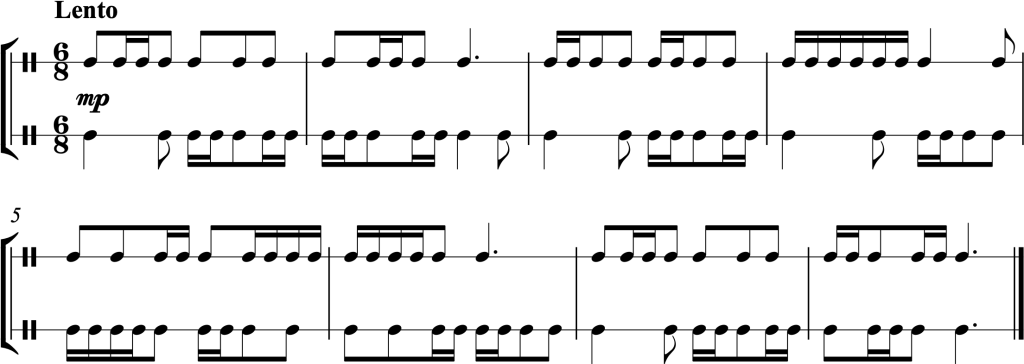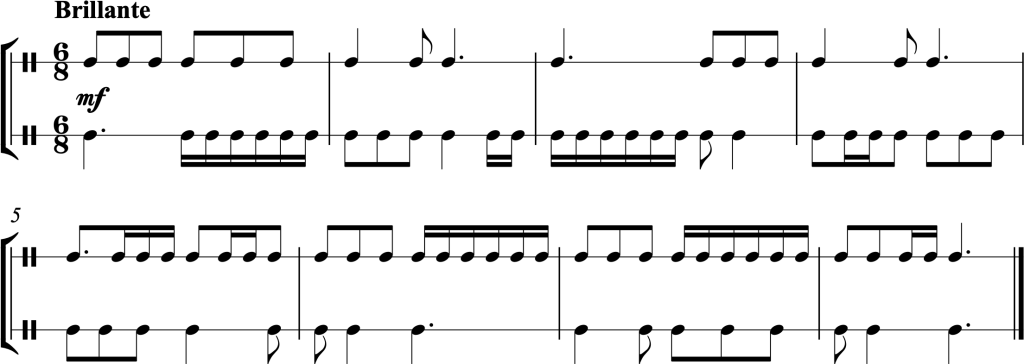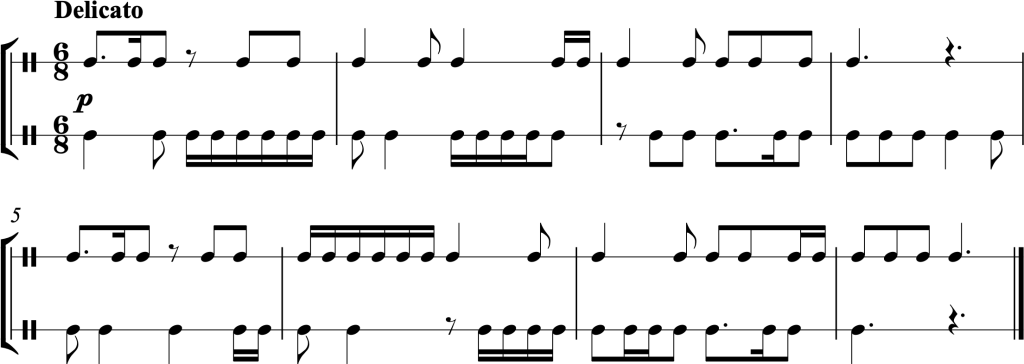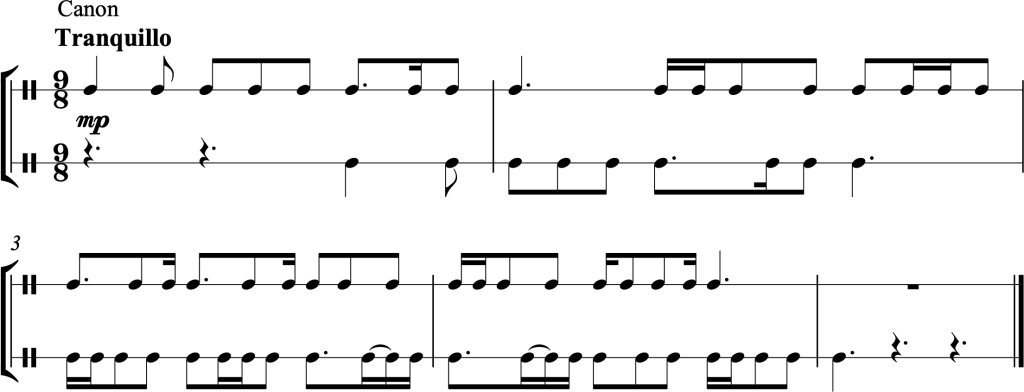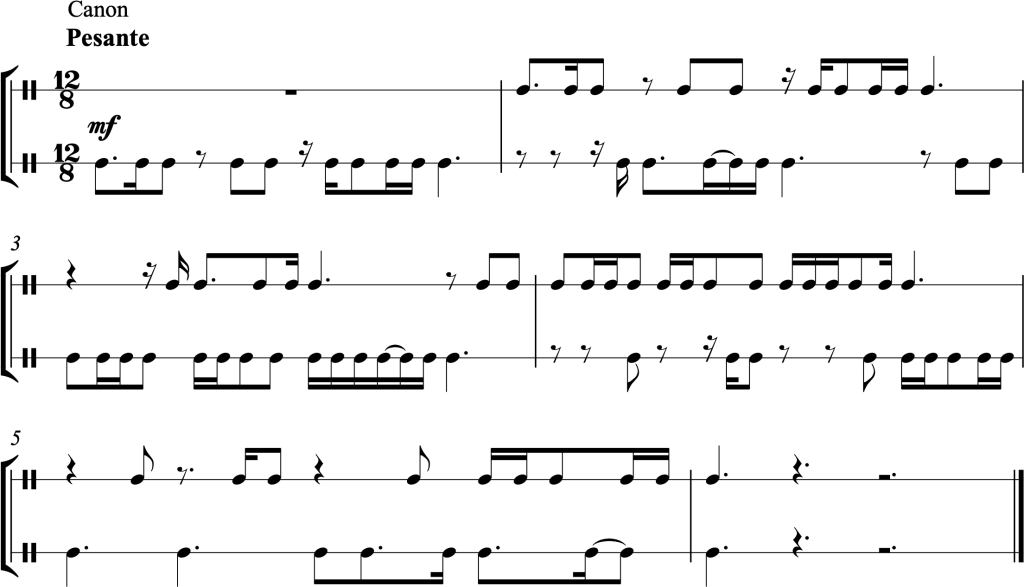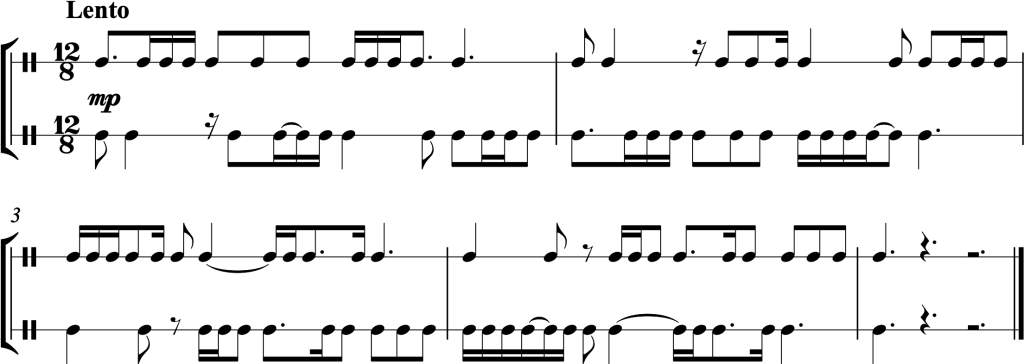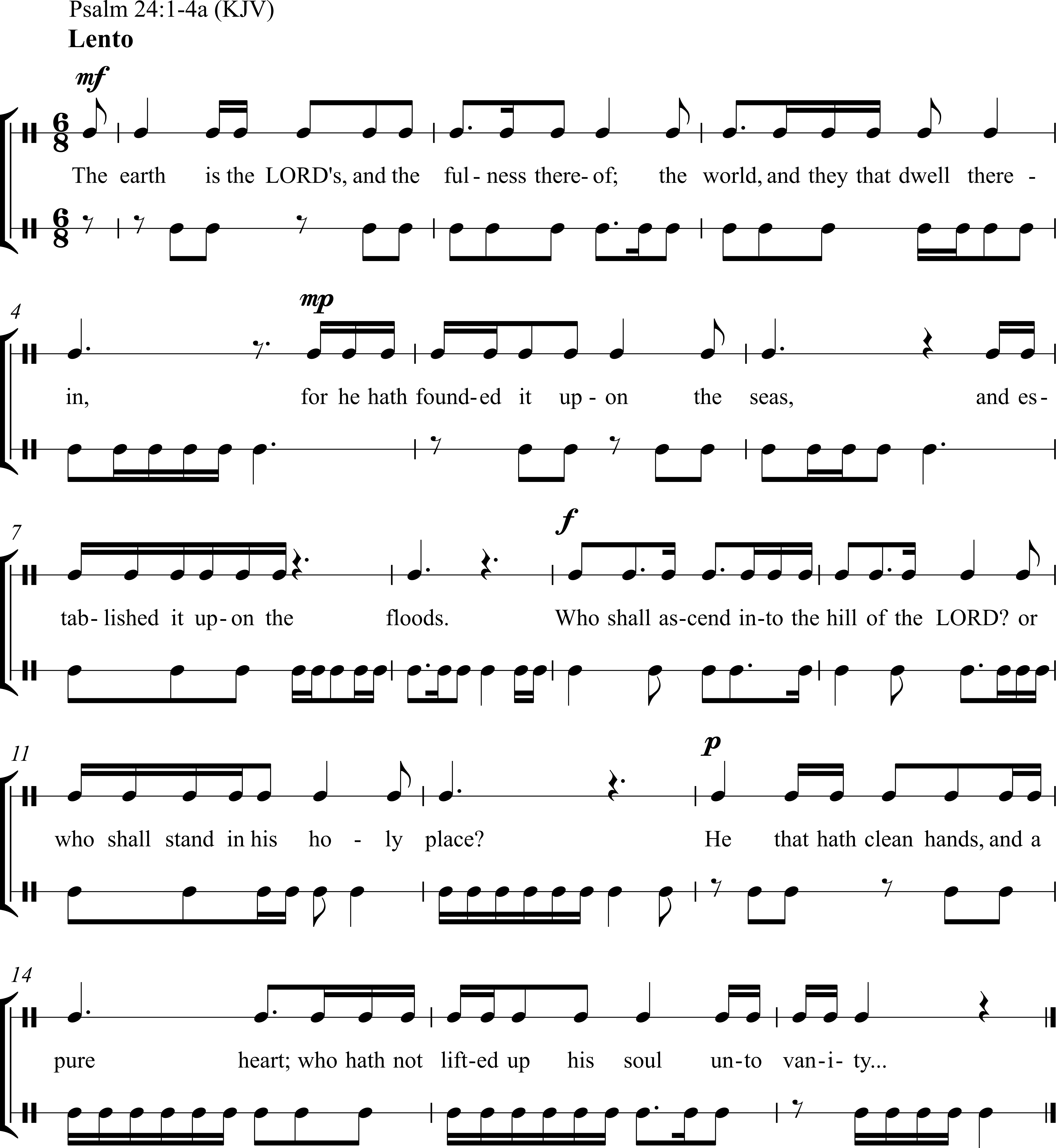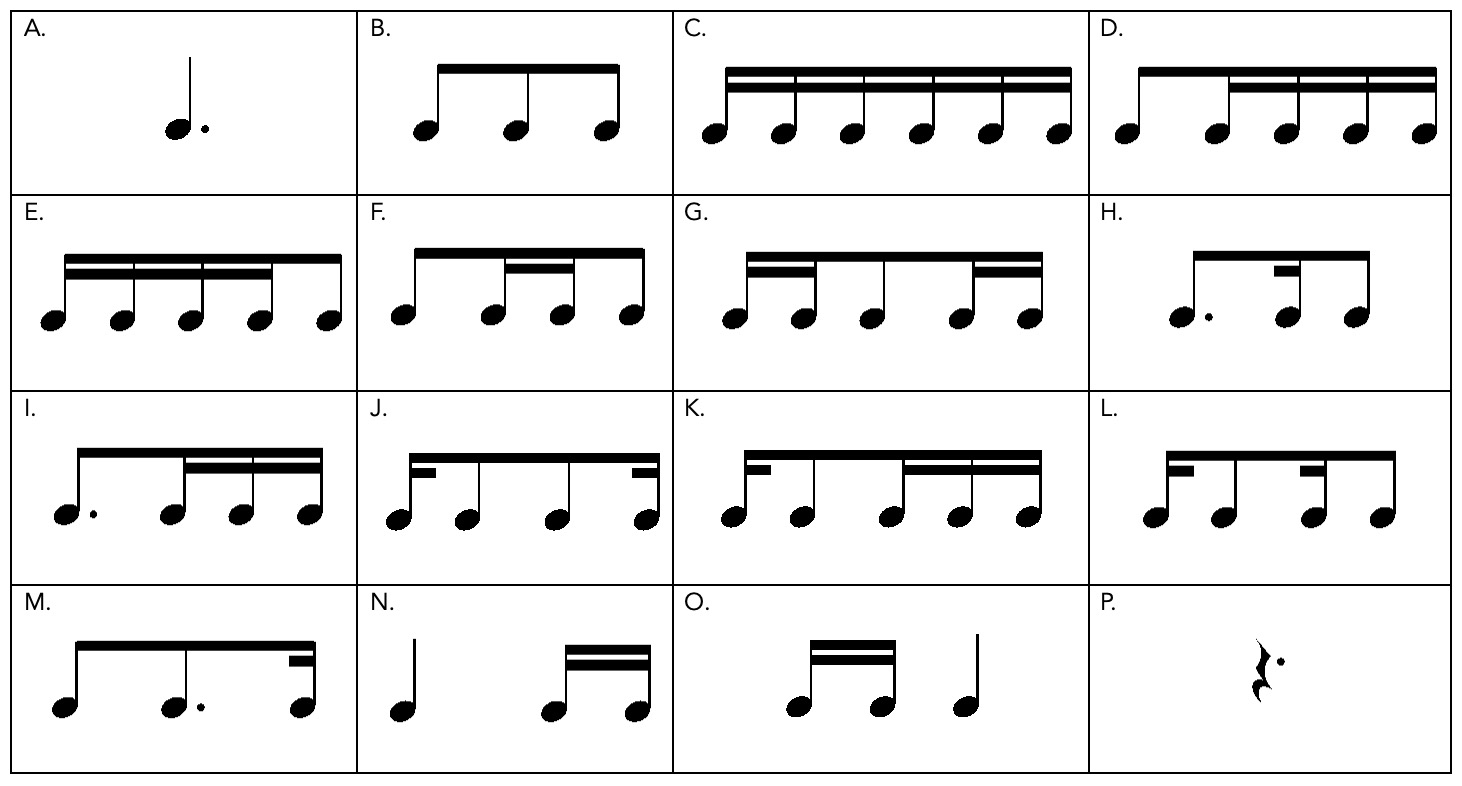Chapter 7: Compound Meter—sixteenth notes
About This Chapter
About This Chapter: In Chapter 5, we talked about sixteenth notes in simple meters. In this chapter, we’ll see sixteenth notes in compound meters. Just like in simple meter, the sixteenth notes in compound meter are the subdivision of the division. The following figure shows the metrical grid that we’re building by dividing the eighth note divisions of a compound meter like 6/8 into sixteenth notes.
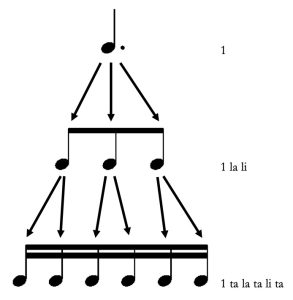 Rhythmic Syllables: Just like when we added sixteenth notes to simple meters, we’ll need some new syllables now that we are seeing them in compound meters. Again, we want to keep the syllables we’ve used for compound meters so far—numbers on the beats and “la” and “li” off the beats. For the sixteenth notes that fall between those syllables, we’ll use “ta.” Check out the example below. From measure 1 to measure 2, we divide the measure into two beats. From measure 2 to measure 3, we divide each beat into three equal parts. From measure 3 to measure 4, we divide each of those divisions into subdivisions—six per beat.
Rhythmic Syllables: Just like when we added sixteenth notes to simple meters, we’ll need some new syllables now that we are seeing them in compound meters. Again, we want to keep the syllables we’ve used for compound meters so far—numbers on the beats and “la” and “li” off the beats. For the sixteenth notes that fall between those syllables, we’ll use “ta.” Check out the example below. From measure 1 to measure 2, we divide the measure into two beats. From measure 2 to measure 3, we divide each beat into three equal parts. From measure 3 to measure 4, we divide each of those divisions into subdivisions—six per beat.

Section A—Eighth notes subdivided into sixteenth-note pairs
Practice
Practice A:
 Practice by performing along with this audio file, which features a metronome click and the notated rhythm. You will hear two measures of wood block to establish the tempo before the exercise begins.
Practice by performing along with this audio file, which features a metronome click and the notated rhythm. You will hear two measures of wood block to establish the tempo before the exercise begins.
Next, try performing along with this audio file, which features the notated rhythm but no metronome click. You will hear two measures of wood block to establish the tempo before the exercise begins.
1.
2.
3.
4.
5.
6.
7.
8.
9.
10.
11.
12.
13.
14.
Section B—Other sixteenth-note combinations
Practice
Practice B:
 Practice by performing along with this audio file, which features a metronome click and the notated rhythm. You will hear one measure of wood block to establish the tempo before the exercise begins.
Practice by performing along with this audio file, which features a metronome click and the notated rhythm. You will hear one measure of wood block to establish the tempo before the exercise begins.
Next, try performing along with this audio file, which features the notated rhythm but no metronome click. You will hear one measure of wood block to establish the tempo before the exercise begins.
15.
16.
17.
18.
19.
20.
21.
22.
23.
24.
25.
26.
27.
28.
29.
30.
31.
32.
33.
34.
35.
Section C—Two-part rhythms featuring sixteenth notes
36.
37.
38.
39.
40.
41.
42.
43.
44.
45.
46.
47.
Rhythmic Cells
- For general suggestions on how to use these rhythmic cells, see Appendix: How to Use Rhythmic Cells.
- Try starting by using only cells from the first two rows, then adding some of the syncopated cells from the last two rows.
Rhythm in Context
Rhythm in Context example coming soon!
Citations
Poem:
- Jupiter Hammon (1711–ca. 1806), “An Evening Thought: Salvation by Christ, with Penetential Cries,” public domain, published 1760, United States.
Psalm:
- Scripture taken from the KJV, 1987, public domain.
Rhythm in Context:












